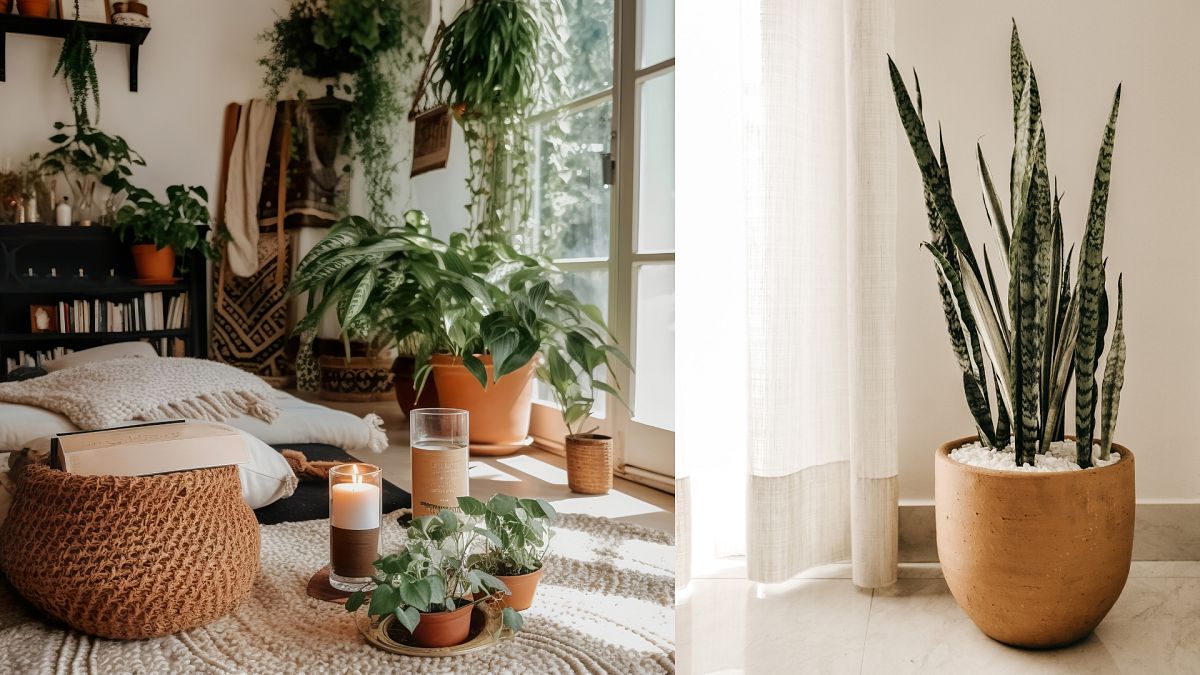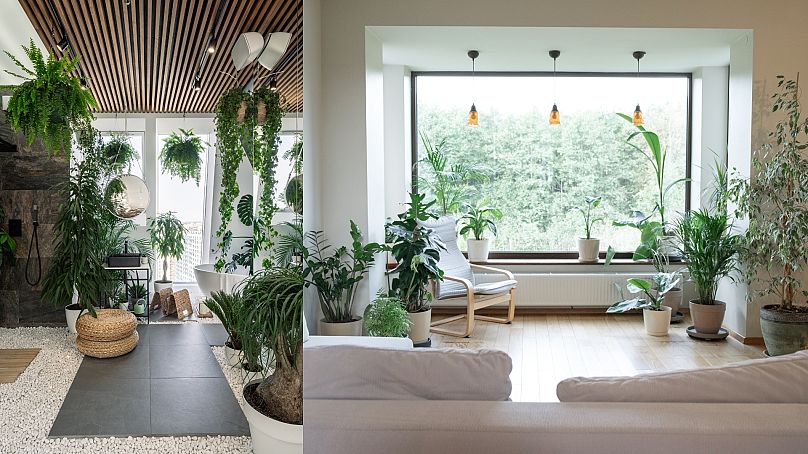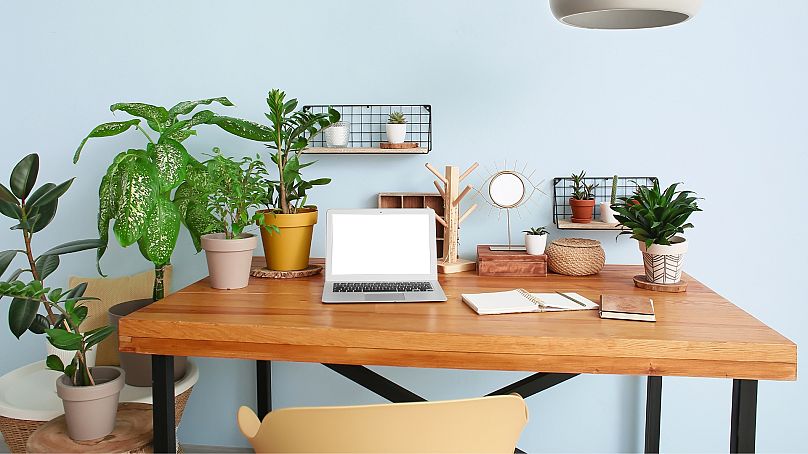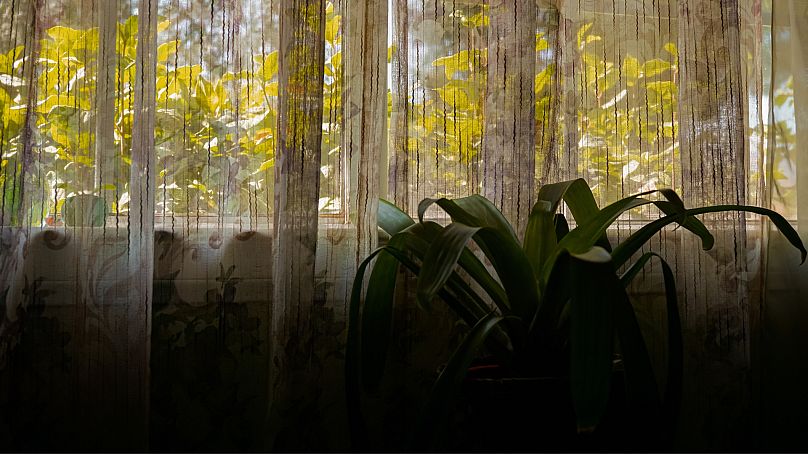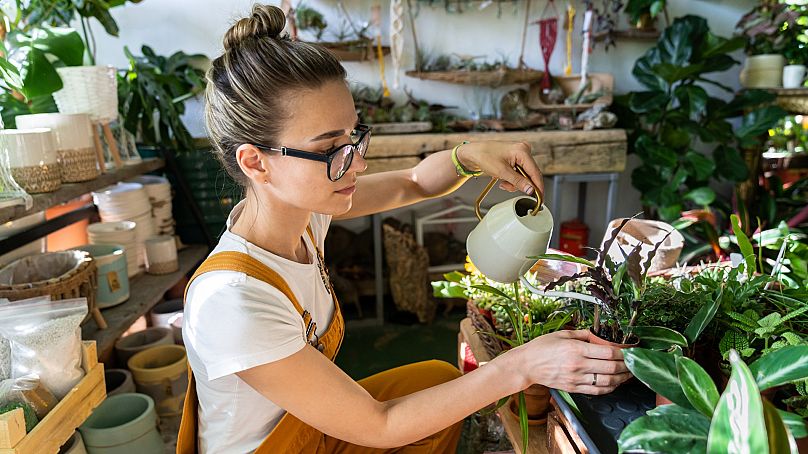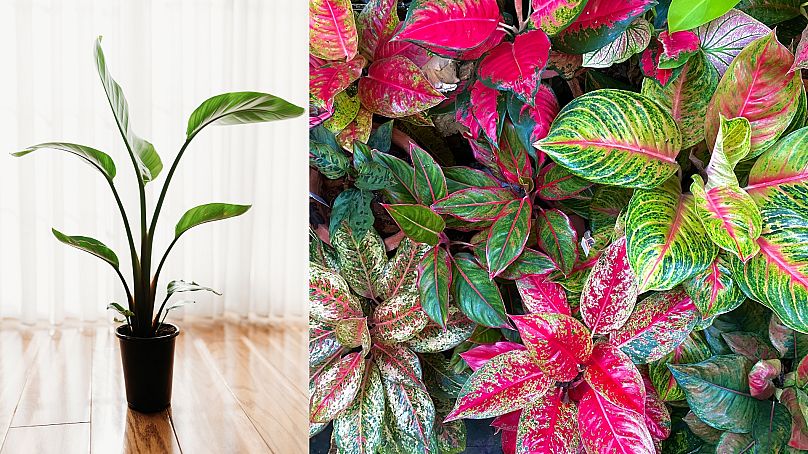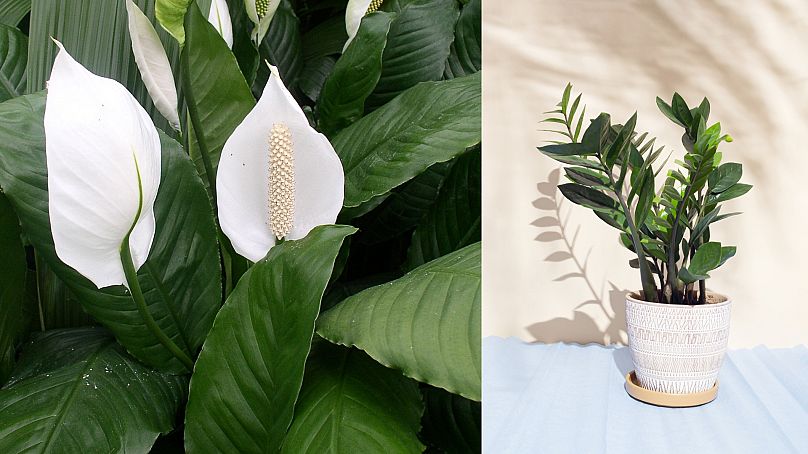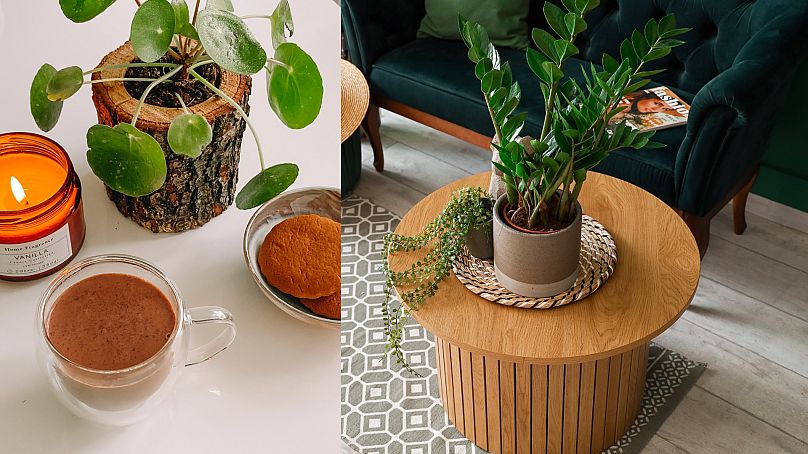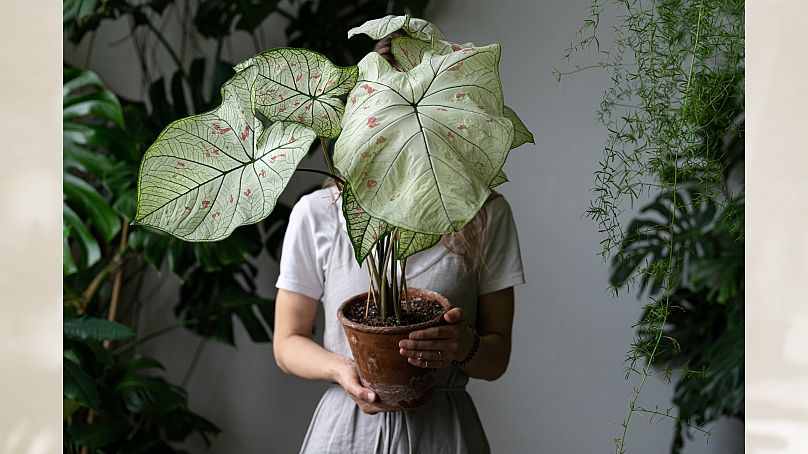Spring is the season of growth and renewal, and the perfect time to start thinking about getting houseplants. We’ve consulted experts on houseplant tips for even the blackest of thumbs.
Maybe you’re like me and you woke up one day last week to discover that spring had quite literally sprung in overnight, transforming the sepia-toned landscape into one that’s peppered with bright green jewels.
It’s a welcome reprieve after what may have been a tough winter for many, with geopolitical tensions, war, economic hardship and death weighing heavily. Not to mention personal tragedies that often eclipse all of these.
It’s also a reassuring reminder that despite all the awful things happening in the world, life continues, the seasons still change and flowers still bloom. A whisper in your ear that tells you that perhaps, you too can grow new leaves after a barren period.
That’s why spring is a perfect time to take stock of your situation and find sources of gentle renewal – whether that means cleaning out your closet or spending more time outdoors.
Spring is also a great time to bring the outdoors indoors, by adopting houseplants. Practically speaking, longer days mean more hours of sunlight and the start of the growth season for most plants, which means they are harder to kill.
Whether you’re a multi-recidivist plant killer or just a beginner who doesn’t know where to start, we’ve consulted some plant experts to put together a guide that will help you maximise your chances of success with houseplants this spring, based on some of the most common questions surrounding indoor gardening.
First of all, why should I consider getting houseplants?
Plants can transform the look of any room in your home, adding a touch of vibrancy to even the drabbest-looking surroundings.
If you’re redecorating your home for spring, adding a couple houseplants can give your space some colour without you having to invest much. Plants are cheaper than furniture and most other home decorations.
But aside from aesthetics, there have been countless studies proving the benefits of houseplants on our mental health. Being around plants can reduce your stress, can help you recover more quickly from illness and can even make you more productive.
One study during the Covid-19 lockdown in Bulgaria found that people with houseplants or a garden felt fewer symptoms of depression and anxiety than those without. That might explain the explosion of interest in houseplants during the pandemic.
When talking to plant lovers, you can tell that there’s also something sentimental about nurturing another living thing.
“When your plant makes a new leaf, even if you’ve been around plants all day, you’re still so happy to see it grow,” says Katrien Van Crombrugghe, e-commerce coordinator at Plantlovers.eu, a European online plant retailer based in Belgium. “It’s really rewarding to see something grow.”
But why do all my houseplants die?
If you have a notoriously black thumb, don’t fear. Houseplant experts generally agree that anyone can learn to take care of plants. But first, it’s important to be aware of the biggest mistakes people make with them.
It all comes down to two key elements that plants need to thrive - light and water.
Jane Perrone, a British houseplant expert, podcast host and author, who’s written several books about the history of plants and how to care for them, says light is the number one thing that will make or break your houseplants.
“A lot of people will say that overwatering is the biggest issue,” Perrone tells Euronews Culture. “But the two are tied together. The more light a plant receives, the more water it will draw up from the soil.”
This means that even if you’re watering your plant a normal amount, it might still die if it’s not getting enough light and can’t draw up enough water.
Perrone’s rule of thumb? “If you can’t read a book without a light on in a particular spot in your house, it’s going to be too dark for houseplants.”
That’s why for Perrone, the first step to getting a new houseplant is assessing your environment, and researching which plants are best for your home according to how much light you have.
Her book "Houseplant Gardener in a Box" is a good place to start - it's a set of 60 houseplant cards, each with its own care booklet. And it looks great as a piece of decor for your home, too.
How do I avoid overwatering?
Van Crombrugghe recommends a philosophy of “loving neglect” when it comes to houseplants. Plants don’t like sudden changes to their environment, she says, so even if your plant is struggling it’s important not to make any drastic moves.
“If their plant is not doing so well, a lot of people will start changing everything at once and they will start to fuss too much and that will for sure kill it,” she tells Euronews Culture.
To avoid overwatering, she suggests throwing out the idea of a watering schedule. Instead, check your plants weekly, but only water them if they are actually thirsty.
How can you tell if your plants are thirsty? “Use the weight of the pot as a guideline in deciding if the soil has dried out enough to require watering,” Van Crombrugghe says. “The difference in weight between dry and wet is immense.”
It’s also important to use a well-draining soil mix and a pot with drainage holes, and “never let your plant get wet feet!” Toss out any excess water that pools in the dish under your pot.
What are some good “starter plants” to try out this spring?
Both Van Crombrugghe and Perrone suggest choosing a plant that you like, instead of following trends or ascribing to rules about “easy plants”.
“You need to think to yourself, am I interested in this plant because everyone else is telling me it’s cool? Or do I genuinely feel excited by this plant? Is it making my heart skip a beat? It needs to be something that you love, and that might not be the same as what everyone else loves,” Perrone says.
However, there are some plants that are better suited to lower light environments and will be easier to take care of if that’s your situation.
For low light: Aspidistra Elatior (Cast-Iron Plant) or Aglaonema Plants (Chinese Evergreen)
“(Aspidistra) is a really great plant for low light areas. It was popular in Victorian times, partly for that reason,” says Perrone.
The long leafy plant is native to Japan and is often used as a training material for the Seika form of Ikebana, the Japanese art of flower arrangements. It’s also tolerant to neglect, so if you forget to water it for a bit, it should still pull through.
Another plant that does well in low-light is Aglaonema, or Chinese Evergreen, says Perrone. Also native to Asia, it’s popular in China for its colourful foliage and is traditionally considered good luck.
These plants can also be kept in fairly small pots, making them a good choice for those living in tiny apartments.
For nervous plant lovers: Zamioculcas Zamiifolia (ZZ Plant) or Spathiphyllum (Peace Lily)
Van Crombrugghe says she is firmly against plant gatekeeping and believes that “all plants are for all people.” But she admits that some plants are a bit more expressive than others, making them easier to care for.
“You’ve got to start somewhere, so why not start with a monstera variegata?” she says. “But if you want to be safe, start with a spathiphyllum because that plant will always let you know when it’s thirsty.”
The spathiphyllum, or peace lily, is a dark leafy plant with white-sheathed flowers. It prefers indirect light but will do well in most environments. And when it needs water, it gets dramatic – its leaves will droop almost cartoonishly, but it will right itself after getting watered.
“The other plant that I always recommend for anyone who struggles with plants is the ZZ plant, which is very adaptable to different light levels,” Perrone says. “You could have it in quite a sunny spot, but you could also have it in quite a dark corner.”
Zamioculcas Zamiifolia, or the ZZ plant for short, is often called the “Eternity Plant”. It’s got a reputation for being hard to kill, but it does prefer bright indirect light if possible. It’s also fairly resistant to underwatering, so you can forget about it every once in a while and it will be fine.
How can I increase my chances of success with my houseplants?
As with anything in life, it’s important to stay positive about your houseplants and not get discouraged by failure.
Both Van Crombrugghe and Perrone spend a huge amount of time thinking about and taking care of plants. And they both admit that they’ve also recently killed some of their plants, despite their expertise.
“A lot of people will kill a cactus and then say, ‘Plants are not for me.’ But that’s not true!” Van Crombrugghe says. “Even I can kill a cactus; everyone can kill a cactus.”
Her best advice is to be able to adapt: “Every plant needs specific things, and if you’re willing to adapt your schedule to the plant instead of subjecting a plant to a schedule, you will succeed.”
“Don’t be discouraged. Try again. You’ll learn through your failures,” Perrone says. “At the same time, try to do a bit of research before you buy something so that you know that it's vaguely suited to your house. That will make a big difference and improve your chances of success.”
And always, always look at your plants - often. It’s scientifically-proven to boost your mood and it will make it easier to catch and fix any problems early.
A good way to do this is by putting your plants somewhere you’re sure to see them – like where you drink your morning coffee, says Perrone.
So get out there and flex that gardening muscle. There’s only one way to improve – by trying.
